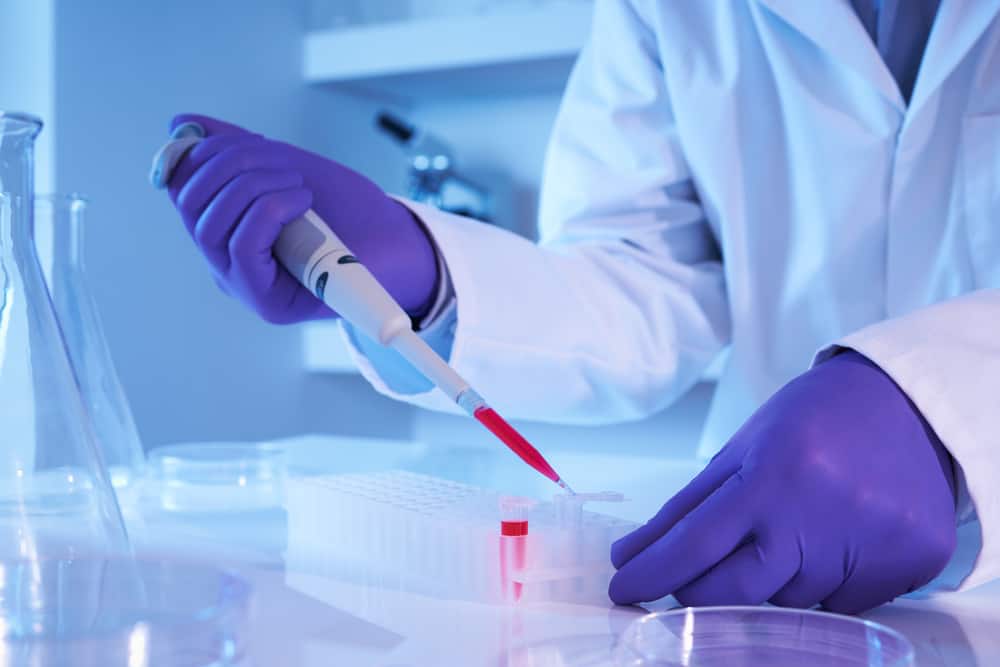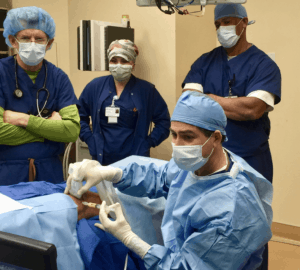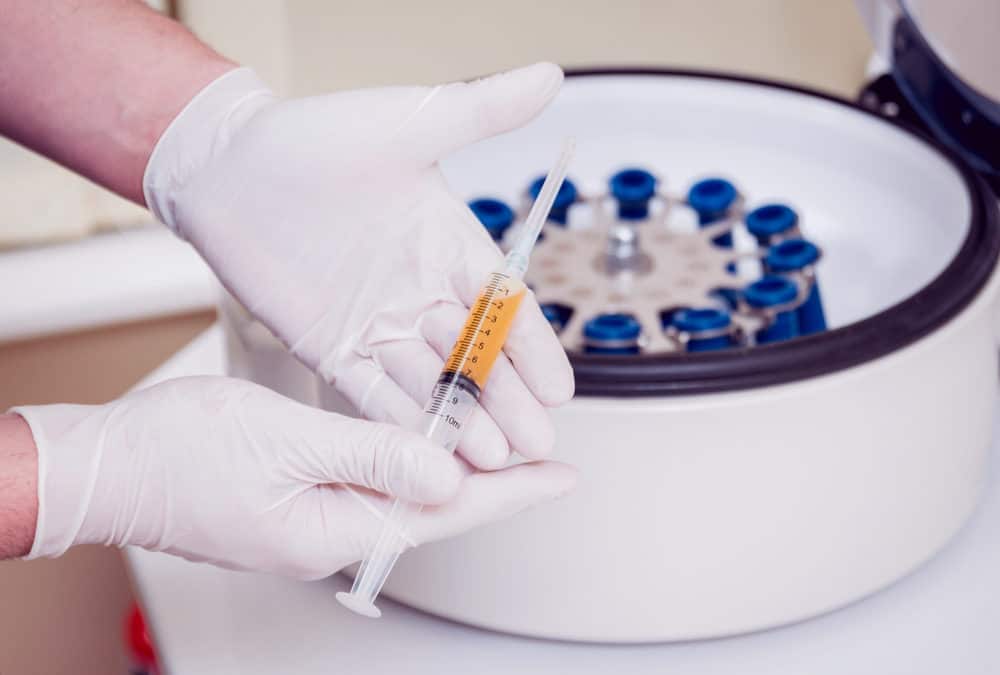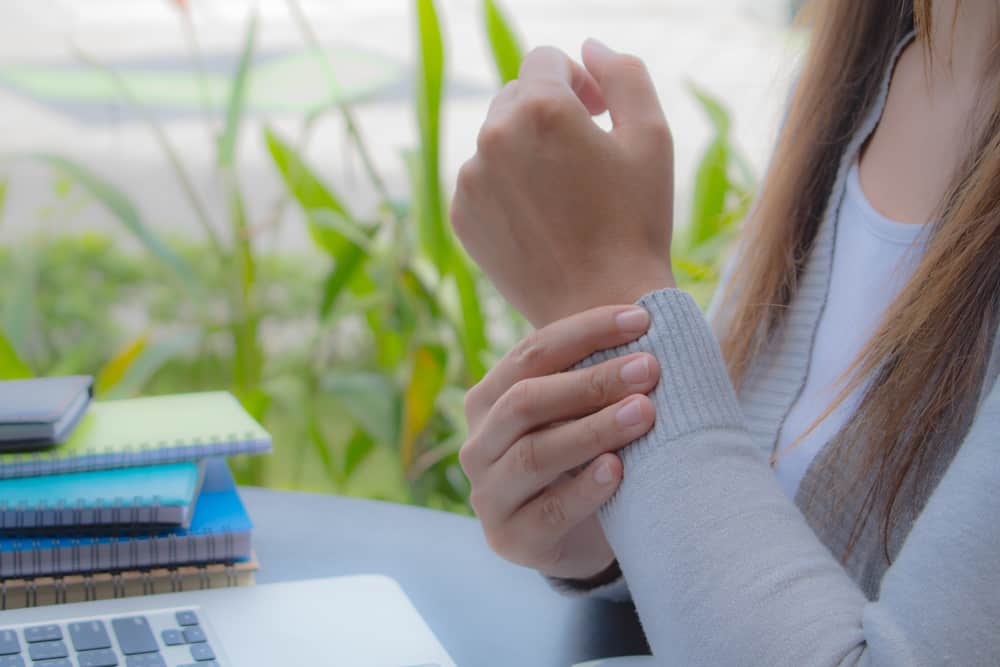
Apr 16, 2020
Safe and Effective Stem Cell Therapy
Osteoarthritis causes joint pain, stiffness, swelling, and can lead to a debilitating chronic condition. Standard treatments of physical therapy and anti-inflammatories are limited at times in controlling symptoms and improving function. The good news for patients with osteoarthritis is that there are regenerative treatment options, like stem cell therapy, to reduce pain and stimulate healing. These therapies offer a viable alternative to major surgery that requires prolonged rehabilitation. It provides hope for an improved quality of life without the risks associated with joint replacement surgery.
What is Regenerative Medicine?
Regenerative medicine is a new medical specialty that uses advancements in the study of cells and tissue engineering to understand how the body heals itself.
By using the unique healing qualities of your own cells, regenerative treatments can stimulate healing, reduce inflammation and decrease pain. Some of these therapies may even prevent the progression of joint arthritis.
Stem cell therapies using a patient’s own bone marrow or minimally manipulated adipose tissue have been shown to be safe and effective in treating osteoarthritis and other orthopedic conditions. These treatments are compliant with current FDA regulatory guidelines.
However, stem cell based products that contain umbilical cord blood, amniotic tissue cells or exosomes have unproven claims on their safety and efficacy. They require FDA approval of a Biologics License Application before they are allowed to be marketed to patients.
What Can You Expect from Stem Cell Therapy?
Stem cell therapy is performed on an out-patient basis and do not require anesthesia. Unlike invasive joint replacement surgery, they do not demand a lengthy recovery time or extensive physical therapy following treatment. These minimally-invasive treatments are performed using advanced image guidance such as ultrasound or fluoroscopy (digital x-ray). The procedure typically takes less than a couple hours to complete and patients can return to their daily activities after their treatment. Light activities are typically recommended for a few days.
Studies show that stem cell therapy derived from bone marrow concentrate improved pain and function significantly better than exercise therapy or hyaluronic acid (gel) therapy in patients with knee osteoarthritis. Another study shows that stem cell therapy from fat and bone marrow tissues resulted in significant clinical improvements in patients with symptomatic knee osteoarthritis.
More published scientific studies for orthopedic applications can be found at www.sdomg.com/fat and www.sdomg.com/bma.
Drs. Christopher J. Rogers and Mary A. Ambach of San Diego Orthobiologics Medical Group are experts and leaders in the field of regenerative medicine. They are the leading providers in San Diego who offer the most advanced regenerative treatments available for orthopedic conditions.

Apr 13, 2020
Dr. Chris Rogers and his team at San Diego Orthobiologics Medical Group in collaboration with Personalized Stem Cells (PSC), Inc. conduct stem cell research at their clinic in Carlsbad, California. As medical director and principal investigator for these FDA approved clinical trials, Dr. Rogers realizes the potential that stem cell therapy may have for COVID-19 patients.
Currently, Personalized Stem Cells, Inc. is awaiting FDA approval to start a new clinical trial in COVID-19 patients. Recently, they were asked by the White House Task Force to apply for an expedited FDA review of their application to treat COVID-19 patients with stem cells. In preclinical trials, stem cells have been shown to improve the lung damage and inflammation caused by viral pneumonia.
Conducting COVID-19 Stem Cell Research
Doctors based in China and Israel published positive outcomes following their stem cell treatments. Israeli doctors announced that seven patients with COVID-19 experienced 100% recovery following stem cell treatment. PSC has collaborators in Wuhan and Beijing, where similar results have been reported.
 To expedite the mass production of stem cells, PSC teamed up with Calidi Biotherapeutics, a San Diego based company which provided the pre-tested master cell line. These cells facilitated fast and efficient manufacturing of more stem cells, which will allow patients to receive treatment more quickly.
To expedite the mass production of stem cells, PSC teamed up with Calidi Biotherapeutics, a San Diego based company which provided the pre-tested master cell line. These cells facilitated fast and efficient manufacturing of more stem cells, which will allow patients to receive treatment more quickly.
Pending FDA approval, the first clinical trial will be held in San Diego in a few weeks. PSC will apply for compassionate use approval for national and international use as well. Compassionate use is a way for patients who are not eligible for clinical trials to receive treatment. These patients have serious or life-threatening illnesses for which other treatments are not available.

Apr 10, 2020
Patients who suffer with pain, stiffness or swelling caused by knee osteoarthritis are often concerned that they may ultimately need joint replacement surgery. The American Academy of Orthopedic Surgeons (AAOS) has reported that more than 600,000 knee replacements are performed each year in the United States.
Knee replacement is a major surgery and requires prolonged rehabilitation. The good news for patients with knee osteoarthritis is that advances in regenerative medicine are offering hope for an improved quality of life without the risks associated with surgery. Recent studies show that 98% percent of patients would like to learn more about these innovative treatment options. However fewer than 50% of surgeons ever discussed these non-surgical alternatives with their patients.
By using the unique healing qualities of your own cells, regenerative treatments can stimulate healing, reduce inflammation and decrease pain. Some of these therapies may even prevent the progression of knee arthritis.
San Diego Orthobiologics Medical Group offers a number of regenerative medicine options for patients with knee osteoarthritis.
Regenerative Options for Knee Osteoarthritis
- Platelet Rich Plasma (PRP) therapy selectively concentrates platelets, plasma and other substances found in the blood to create a customized healing treatment that specifically targets knee joint arthritis.
- Plasma Rich Growth Factor (ENDORET PRGF®) creates a more rapid and natural healing response by using proteins in your blood to facilitate a balanced release of growth factors essential for healing.
- Autologous Fat Tissue Products (Lipogems®) enables regenerative cells (such as stem cells) within your own fat tissue to work together and repair, reconstruct and replace damaged or injured tissues.
- Bone Marrow Aspiration Concentrate (BMAC) utilizes regenerative cells that are contained within your own bone marrow. The marrow contains a rich reservoir of “pluripotent” stem cells to stimulate your body’s ability to improve circulation, decrease inflammation and regenerate tissues.
- Master Protease Inhibitor (A2M) uses a natural substance found in your blood (Alpha 2 Macroglobulin) to stop the progression of joint degeneration and improve pain and inflammation in arthritic joints.
These minimally-invasive treatments are performed using advanced image guidance such as ultrasound or fluoroscopy (digital x-ray). They are performed on an out-patient basis and do not require anesthesia. Unlike surgery, they do not demand a lengthy recovery time or extensive physical therapy following treatment.
Patients who suffer with knee pain will benefit from a consult with a practitioner who is experienced in diagnosing and treating orthopedic conditions so they can review all their options before considering unnecessary joint replacement surgery.
Drs. Christopher J. Rogers and Mary A. Ambach have extensive experience in the treatment of orthopedic conditions and sports injuries. They are recognized experts and leaders in the field of regenerative medicine and were the first providers in the San Diego area to offer some of these advanced medical treatments.

Apr 2, 2020
Great bakers know that when it comes to delivering the best treats and sweets, you have to carefully measure your ingredients.
The same applies to Platelet Rich Plasma (PRP) therapy. The measured amount, the dosage, of concentrated platelets and other cells in the plasma, must be customized to each patient’s specific condition to achieve the best outcomes.
Platelet rich plasma uses highly concentrated platelets to speed up the healing process, decrease inflammation and stimulate tissue regeneration. See our blog on PRP. As we go in-depth in the study of PRP, we now know that determining the best PRP treatment is not just about how much platelets are in the injection.
Not All PRP are the same
There are other factors that need to be considered to obtain the best PRP treatment. There are other other cells in the PRP, specifically the red blood cells and white blood cells that need to be adjusted depending on the patient’s condition. Platelets release growth factors that facilitate the healing process. The timing and pattern of growth factor release and the individual’s cellular response to growth factors may vary. This can affect outcome and should be thought out in determining PRP treatment. There is a wide variety of methods used to harvest, process and deliver PRP therapy. The resulting platelet count, cell composition and PRP quality are highly variable and can affect clinical outcome.
Only physicians truly experienced in using PRP know how to adjust the dosing appropriately. Joints, tendons, ligament and nerves require their own specific PRP formulation. Imagine if a doctor writes the incorrect kind and amount of antibiotic to treat your specific infection. Patients should make sure that they do their homework in seeking skilled and experienced physicians providing their PRP treatment. These physicians should not only know how to provide the best customized PRP for your need, they should also be adept in the delivery of PRP therapy. These physicians should have advanced training in diagnostic ultrasound or fluoroscopic (xray) guided procedures to make the procedure safe, comfortable and effective.
Not all PRP dosing is the same. Patients should choose physicians who have the knowledge and expertise to ensure they get the right kind of PRP for their orthopedic condition.
Dr. Christopher J. Rogers and Dr Mary A. Ambach are experts and key leaders in the field of regenerative medicine. They are board certified doctors with over 20 years of combined research and clinical experience in platelet rich plasma and other cell based therapies.

Mar 27, 2020
Anyone who has jammed a finger or sprained a wrist knows how painful and disruptive these injuries can be. We constantly use our wrists, fingers and thumbs throughout the day. They are essential to the performance of our daily functions. Hand and wrist pain can affect anyone, whether you are an office worker, caregiver, or a high performance athlete.
Overuse and underlying conditions can cause pain and interfere with daily life.
Common Causes of Hand and Wrist Pain:
Arthritis:
Osteoarthritis is a chronic joint disease that slowly degenerates the protective cartilage in your joints. It is one of the most common reason for pain in the hands and wrists. Although it tends to affect older adults, it can also occur in younger people as a result of cumulative injury from overuse of the hands and wrists.
Rheumatoid arthritis is a chronic inflammatory disease that causes swelling, pain and deformity in the joints. It tends to affect the small joints of the hands and feet first. As the symptoms progress, it can spread to the other joints in the body like the knee and shoulder joints. It can also affect structures in the body that are outside of the joint like the skin, eye and heart.
Carpal Tunnel Syndrome:
Carpal tunnel syndrome is a common condition of the hands and wrist that affects up to 10 million Americans. It is a collection of signs and symptoms that occurs when the median nerve is compressed within the carpal tunnel in the wrist. The increase in pressure in the carpal tunnel causes changes that eventually leads to symptoms of numbness, pain, or weakness in the hands and wrist. The exact cause is unclear, but is believed to be a combination of different factors including genetic, medical, vocational, social and demographic.
De Quervain’s Tenosynovitis:
De Quervain’s Tenosynovitis is a condition where there is irritation and swelling of the tendons on the outside of the thumb. It is caused by acute or repetitive trauma of the tendons causing inflammation, swelling and thickening. Repetitive motions like playing an instrument, lifting or use of a handheld device can cause this problem. Symptoms include pain, swelling and limited motion of the thumb and wrist.
Ganglion Cyst:
Ganglion cyst is a small sac of fluid that forms over a joint or tendon. In the hands and wrists, they usually appear on the backs of the wrists or hands. It can be caused by repetitive motion or trauma that causes the tissue of the joint or tendon to break down forming cysts. Most of the time they present as a small, soft, painless lump. Sometimes they can be painful and limit movement in the wrist or hand.
Peripheral neuropathy:
Peripheral neuropathy occurs when the peripheral nerves are damaged, often as the result of injury, infection or some chronic conditions, such as diabetes. They can present as numbness, pain, sensitivity and/or weakness in your hands and feet.
Trigger Finger (Stenosing tenosynovitis):
Trigger finger occurs when the tendons that control the movements of the fingers and thumb become irritated and swollen. This can create a painful sensation of fingers locking and catching. In severe cases, the fingers can get stuck in a bent position.
If you experience any of these symptoms, consult with your doctor. There are many effective treatments for addressing pain in the hands and wrists. Most of these conditions can be treated though non surgical means like rehabilitation, anti inflammatories or injections. More severe conditions may require more advanced interventions. Early detection will result in a more effective treatment.
You don’t have to live in pain. We welcome the opportunity to help reduce your pain and get you back to living your life without limitations.

Oct 30, 2019
Dr. Mary Ambach was an international Guest Speaker at the Annual Congress of the Brazilian Society of Tissue Regeneration. This is a multidisciplinary conference in Campinas, Brazil with a focus on cell therapy and biologics. Dr. Ambach talked about the current updates on PRP, bone marrow and adipose derived stem cells for the treatment of degenerative disc disease causing low back pain.



 To expedite the mass production of stem cells, PSC teamed up with
To expedite the mass production of stem cells, PSC teamed up with 



